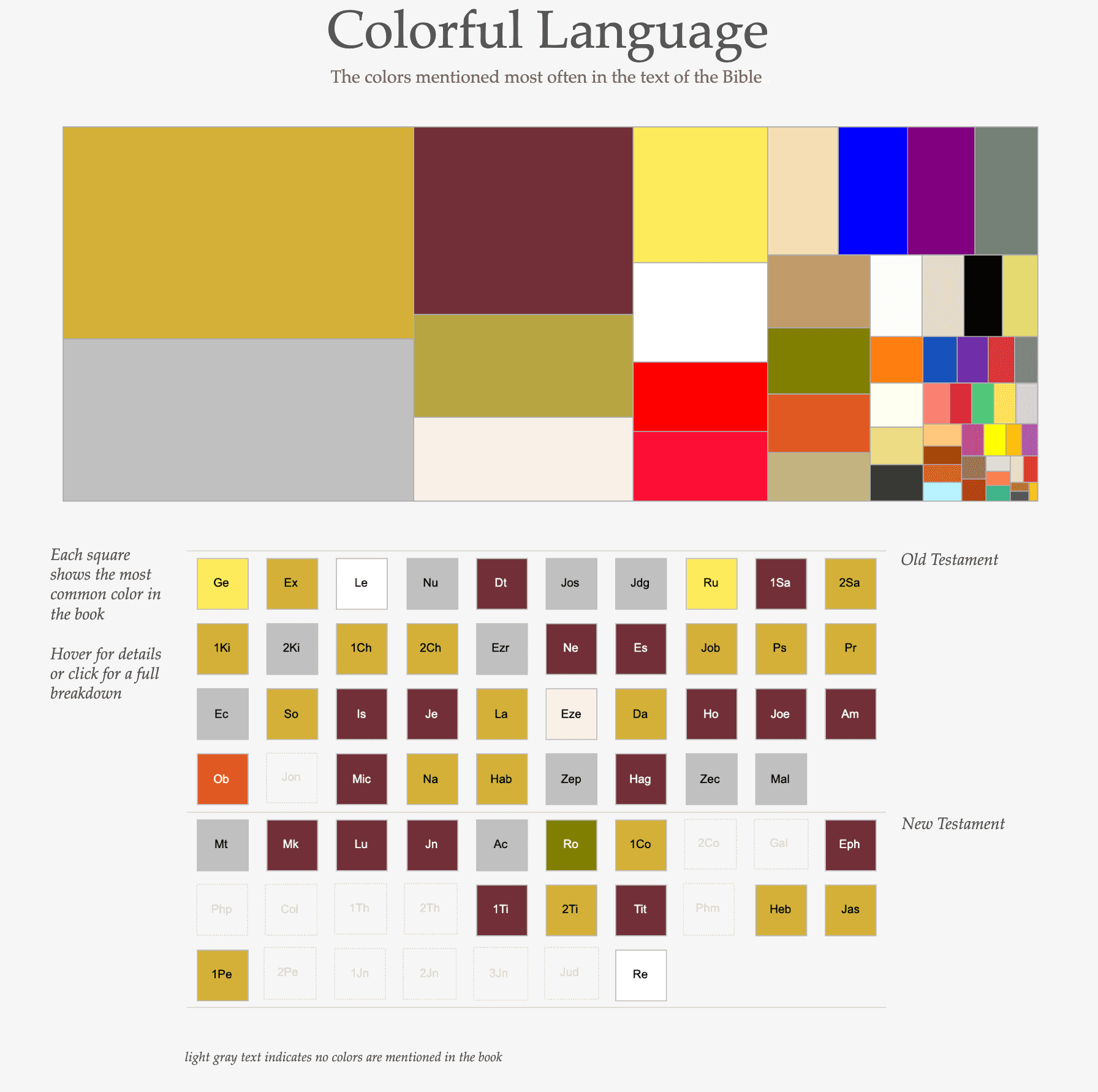Colorful Language in the Bible
Good stories include vibrant imagery helping our imagination recreate the scene as we read or listen. Our senses are invoked with familiar and symbolic elements. Throughout the Bible, certain materials and colors carry deep meaning. White symbolizes purity and light. Gold is associated with kings, red for blood atonement. In many cases, the word describes a material, not just a hue. This gives the imagery more meaning but no less color.
This visualization shows how each book of the Bible uses colors to develop its stories. In the interactive version, you can click on book abbreviations to explore detailed breakdowns.
What Color is It, Really?
This graphic uses the values from Wikipedia’s list of colors to shade each segment. The disparity in language and color descriptions over time means that how we define a color today may not perfectly represent the colors as they were at the time of writing. The purity of the gold or silver, the type of wine or linen – all of these could affect how we build the pictures in our minds or in a visualization.
Language is another problem. What we think of today as corn is not the same thing as what it was when the King James Version (the text behind my database) was translated. “Corn” referred to various types of grain, not the yellow maize we eat these days. I have shown it as yellow in this visualization for the sake of simplicity.
Subjective Exclusions
Not every word which matches the name of a color is actually meant in that way. We have some fanciful names for colors, like: “liberty,” “smitten,” and “folly.” When the Bible uses these words, it obviously doesn’t describe a visual component. Those are filtered out of this data set.
Some of those exclusions are clear, others are more subjective. Gold is a physical object with a distinctive, symbolic color and should stick around. “Deer” and “camel” are also physical things but probably not intended to describe anything but the animal. Those are removed despite the word’s existence in the color list. Cinnamon, grape, and straw are a little fuzzier, so I have erred on the side of inclusion in those cases.
What does this tell us?
Each book of the Bible has a particular theme. Where the topic is purity, the color white would be mentioned more frequently. I leave it to the reader to study the meanings of all of them. Does that sense stand out as something the author intends to emphasize? My hope with visualizations like this is not to present answers but to invite curiosity. It’s a place to begin asking more questions that will lead to a fuller understanding of themes and the significance of the text’s visual language.
